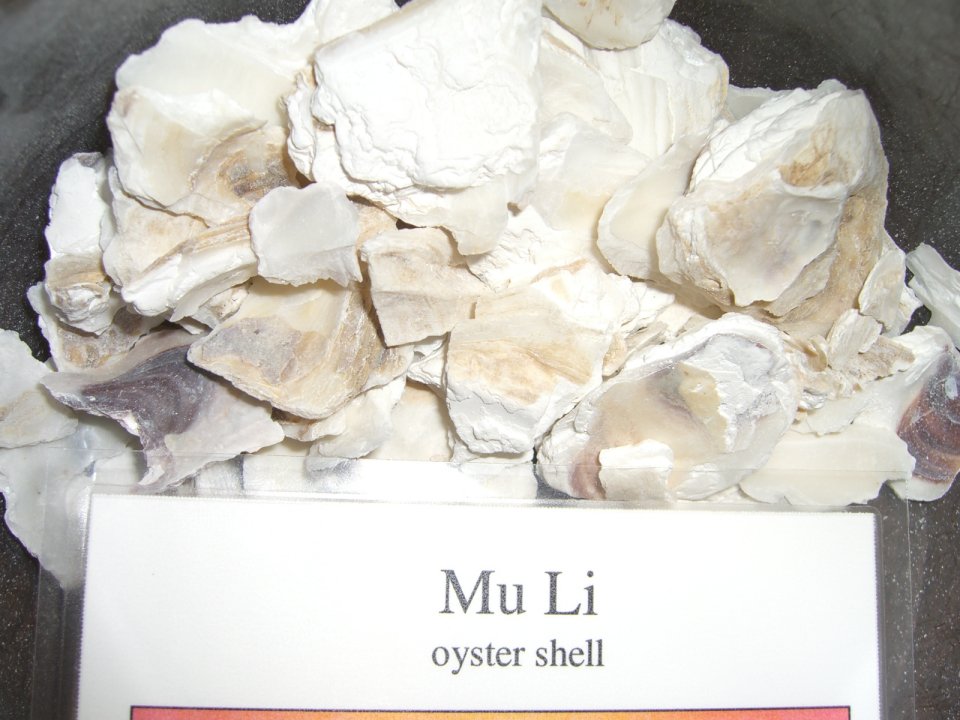Mu Li

  | Mu Li in TCM:Explore the properties of Mu Li according to Chinese
Nutrition and Traditional Chinese Medicine (TCM):
Factoids:
English Name: oyster shell
Pharmacuetical Name: Concha Ostrae
Properties: salty, astringent, cool
Temperature: cool
Channels: KD, LV
Flavors: astringent, salty
Special Properties:
disperses wind, reduces swelling
Alternate Forms:
- Sheng: to anchor LV yang and soften hardness
- Duan: absorbing acidity to prevent leakage
- Zhen Zu (Margarita Pteria martensii) - sweet, salty, cold;
HT and LV: sedates HT, settles tremors and palpitations, clears LV and
eliminates superficial obstruction; promotes healing and generates flesh
topically (0.3-0.9g)
Actions / Indications:
- Calms LV; Anchors floating Yang (LYR induced irritability,
severe insomnia, dizziness, headache, tinnitus, blurred vision; manic
depressive disorders, stronger than Long Gu to subdue LV yang)
- Prevents leakage of fluids (sweating due to steaming
bone disorder or post warm-febrile, spontaneous sweat, night sweats,
nocturnal emission, spermatorrhea, frequent urination, incontinence,
vaginal discharge, uterine bleeding due to deficiency)
- Softens hardness; dissipates nodules (various lumps
in neck, scrofula, goiter, breast cysts)
- Neutralizes Acidity; Relieves Pain (Stomach fire
with acid reflux: modern use for GI ulcers; chronic sores and ulcers,
eczema, damp rashes: external or internal use)
Special Notes:
- (cook: crush and cook 20-30 minutes first)
- Compare Mu Li to >Shi Jue Ming and Long
Gu.
Contraindications:
- (cc: SP/ST deficient cold)
- (cc: overdose, especially of duan form, may cause indigestion or constipation)
Disclaimer: In accordance with our terms of service, by using this web site you agree that none of the information found on this web site constitutes medical advice. You should always consult your doctor before trying any particular food or herbal remedy to treat disease.
Folk remedies presented on this site are designed to address specifc TCM diagnoses, and are not one-size-fits-all. If you would like to learn more about Traditional Chinese Medicine (TCM) and how it relates to Chinese Nutrition, you can book in a free call with a licensed professional. There is no obligation to purchase.
[CLICK HERE for your free INITIAL CONSULTATION] |

